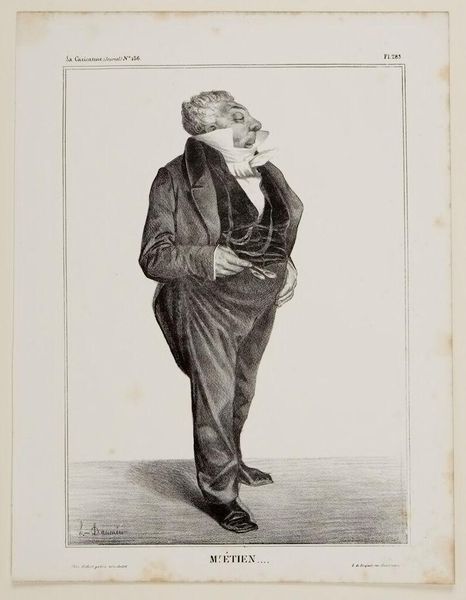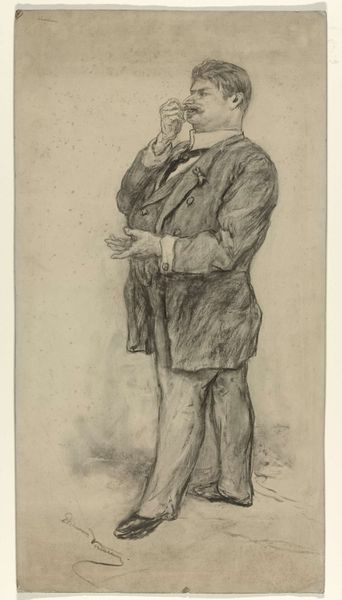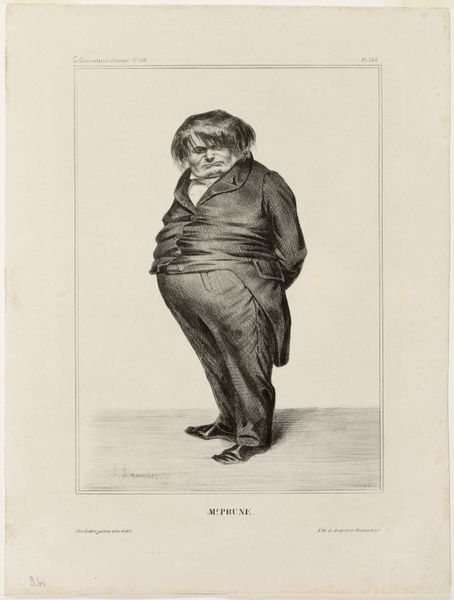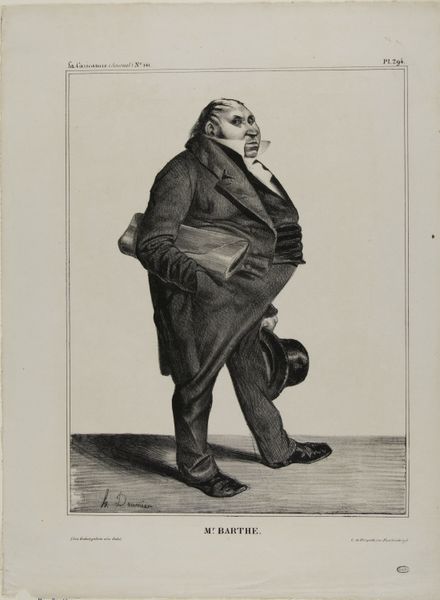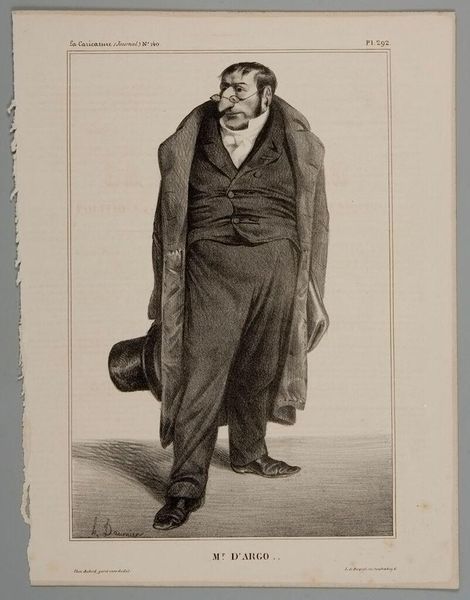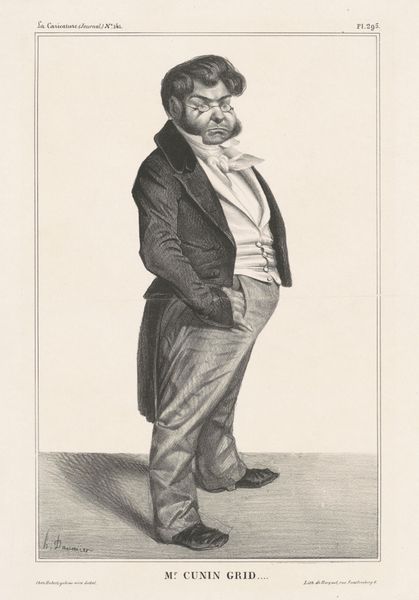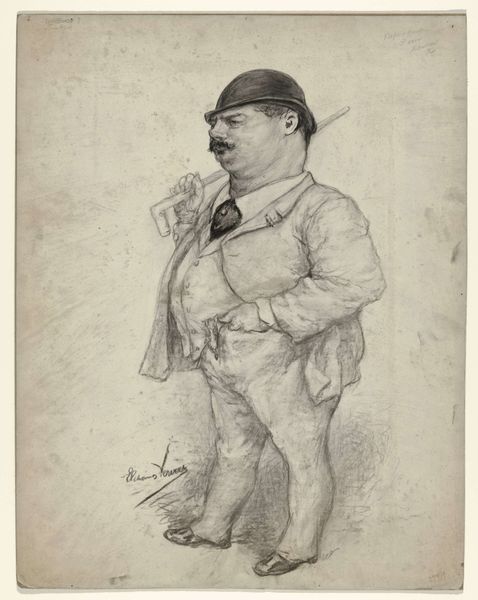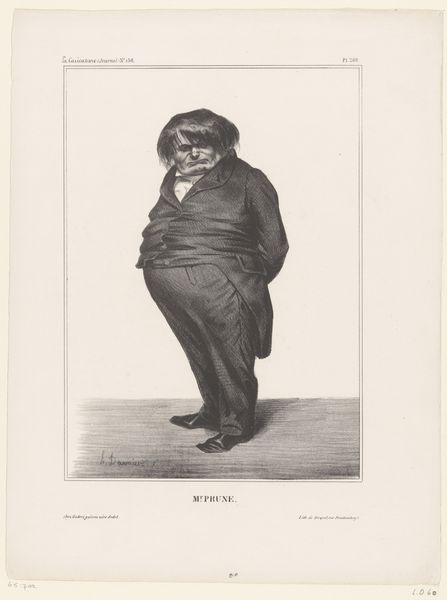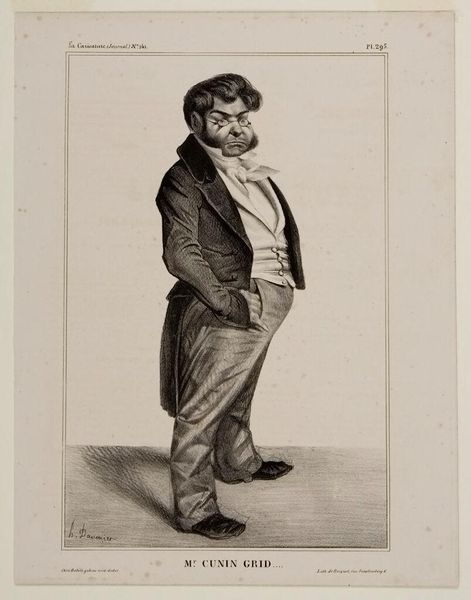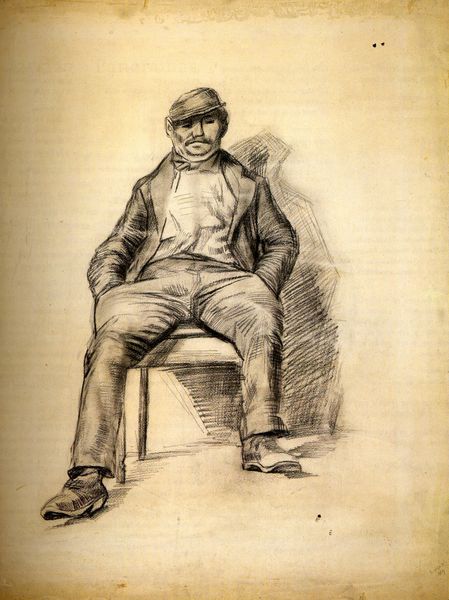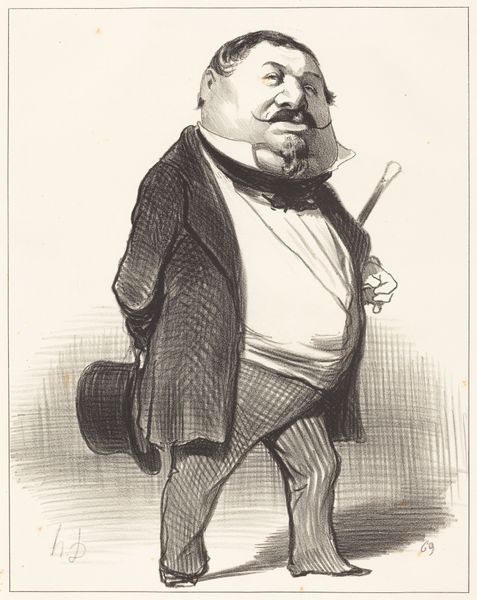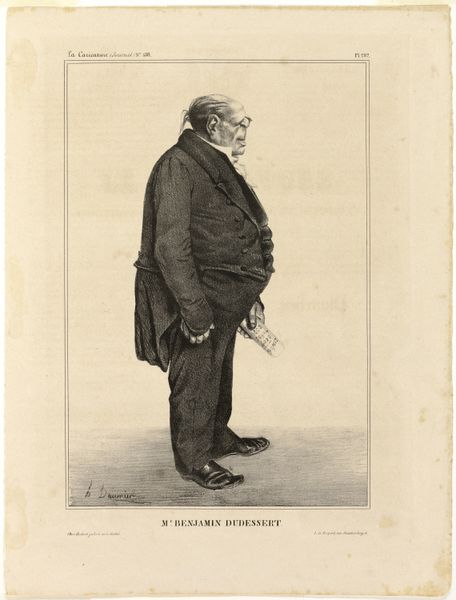
lithograph, print
#
portrait
#
lithograph
# print
#
caricature
#
romanticism
#
realism
Copyright: National Gallery of Art: CC0 1.0
Curator: Here we have Honoré Daumier’s lithograph, “Gazan,” created around 1835. Gazan slumps, a figure overflowing his simple stool, and what catches your eye first? Editor: The weight, definitely the sense of sheer, heavy presence. The man is immense. Look at how the lines create that rounded bulk and then the deep shadows where the clothing creases, adding to this sense of volume and inertia. It's a study in conveying mass through, well, a mass of lines. Curator: Indeed, and it is lithography at its finest. What Daumier manages with gradations of tone and simple hatching is masterful. One feels Gazan’s despondency. Notice his gaze averted, his posture suggesting resignation. But I do wonder about this lithographic stone. Imagine the labor: grinding, polishing, the very specific greasy crayon. Daumier likely knew the printer intimately, understanding how each touch on the stone would translate to the final impression. Editor: Exactly. We can talk about romanticism and realism, and his intent to capture Gazan, but it’s important to acknowledge this was commercial work, not simply artistic expression. Curator: Of course. The print meant reproduction and widespread circulation. Editor: Think about the accessibility! Here we have a portrait made accessible to people who likely could not afford or even have access to see an actual portrait in paint or sculpture. Daumier democratizes representation. Curator: A vital point. It allows for his social commentary to reach a much larger audience. Though, I'd also say the caricature allows for a deeper truth to emerge through exaggeration. There’s a raw emotional vulnerability in Gazan’s slumped form that resonates beyond mere social critique. There's also an artistic choice in what is and isn't depicted. Why present only Gazan? What absence does that signal? Editor: And Daumier presents labor here too, Gazan wears a kind of working class uniform. It suggests both a role in society, as well as maybe some sense of status given the artist captured this man and presented him to a wide public audience. It gives us reason to think about work in terms of Daumier and his workers who made this work of art as well. Curator: I concur. Gazan’s heaviness becomes almost symbolic—a burdened spirit mirrored by the weight of the physical labor necessary to produce and disseminate such images. Editor: Yes, exactly. Now I’m feeling his weight even more poignantly than before.
Comments
No comments
Be the first to comment and join the conversation on the ultimate creative platform.


